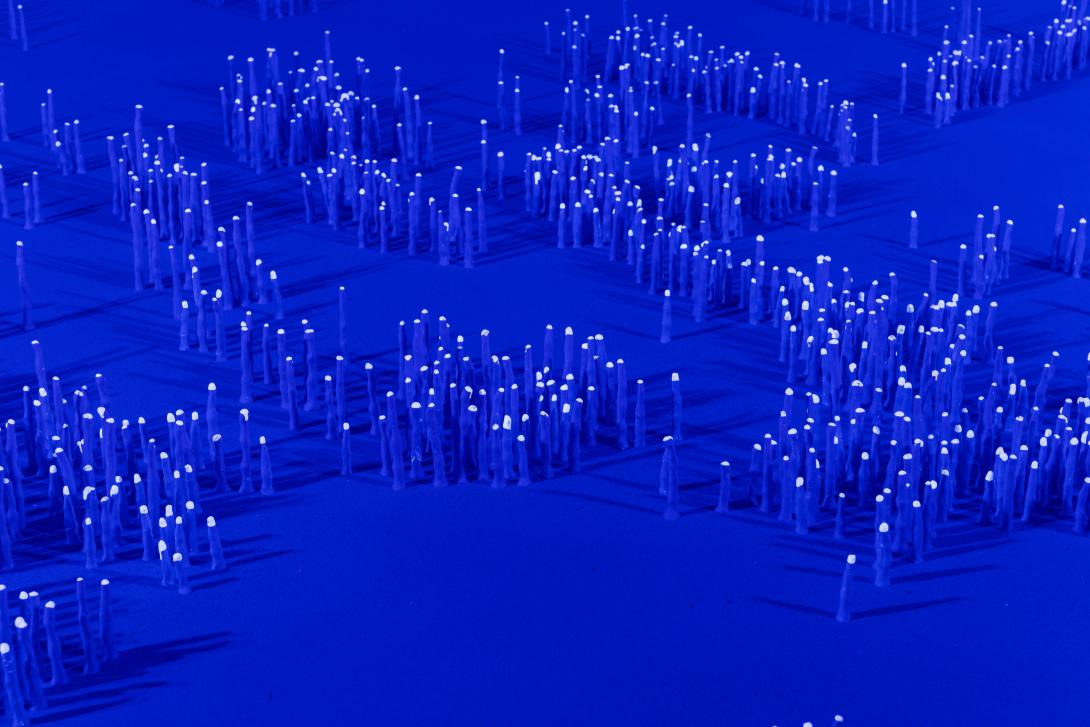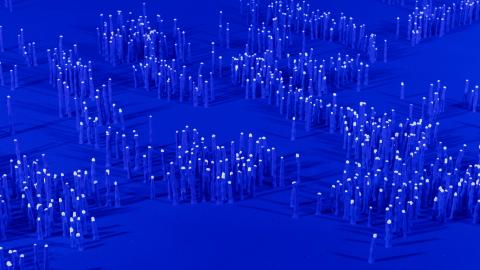Vera Möller
‘Water: Pulse’
cajalia mimics the aerial roots, or pneumatophores, of mangroves. We can see such roots along the Brisbane River — they stick up above the tidal sands to take oxygen from the air. Mangroves also grow near artist Vera Möller’s home in Western Port Bay, Victoria, where over many years she has observed the life they support.
These glowing sculptural forms reference the research and drawings of pioneering neuroscientist Santiago Ramón y Cajal, who first proposed individual nerve cells that communicate with one another without being physically connected. He discovered that each cell sends and receives messages through negative spaces called synapses. cajalia evokes the many mysterious links that connect us, whether via the networks of neurons within our bodies, or the integrated ecosystems making up the biosphere.

Vera Möller / Germany/Australia b.1955 / cajalia 2019 installed for ‘Water’ at GOMA, December 2019 / Modelling material and acrylic / Courtesy: The artist and Philip Bacon Gallery, Brisbane / © Vera Möller / Photograph: N Harth, QAGOMA

Vera Möller / Germany/Australia b.1955 / cajalia 2019 installed for ‘Water’ at GOMA, February 2020 / Modelling material and acrylic / Courtesy: The artist and Philip Bacon Gallery, Brisbane / © Vera Möller / Photograph: J Ruckli, QAGOMA
